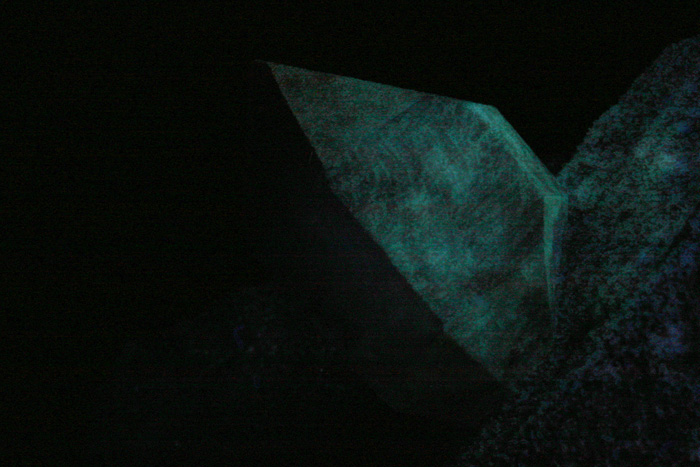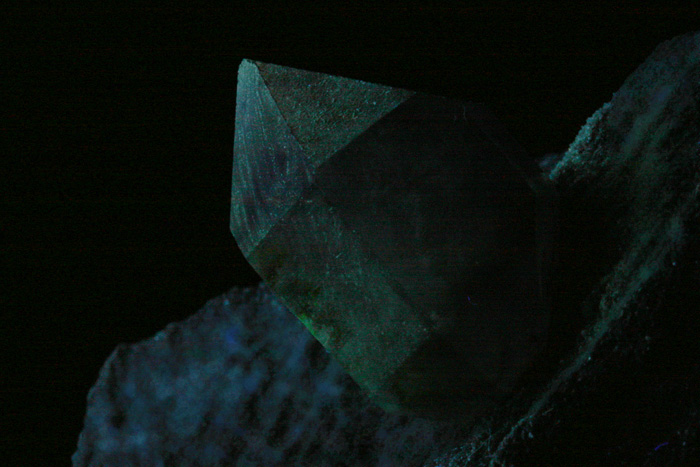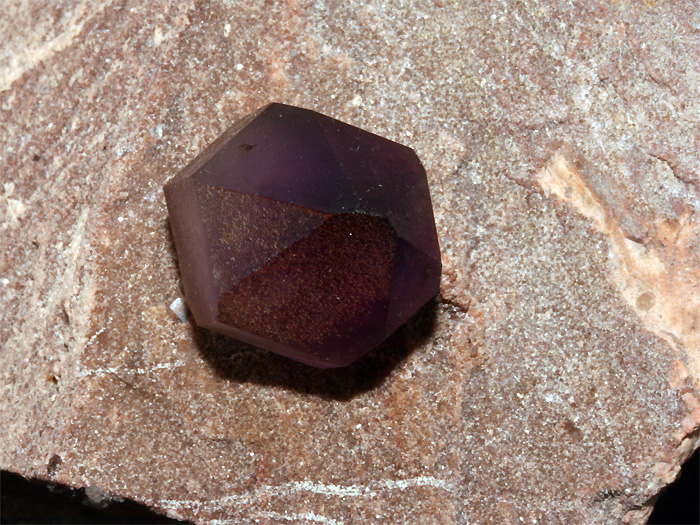Database of luminescent minerals
amethyst (French name: amethyste )
Mineral NOT FLUORESCENT but sometimes cited in luminescence literature
Chemical formula: See QUARTZ
Family: Oxides and hydroxides
Status: NR
Crystal system : Rhomboedric
Display mineral: NON
Luminescence:
Shortwave UV (254nm) colors: |
Green , | ||
Intensity SW:Weak | Frequency SW:Very rarely | ||
Daylight picture

Amethyste,
Kedon, Magadanskaya Oblast, Far-Eastern Region, Russia;
Col. G.Barmarin; Photo: G. Barmarin
Shortwave (254nm) picture

Amethyste, UVSW
Kedon, Magadanskaya Oblast, Far-Eastern Region, Russia;
Col. G.Barmarin; Photo: G. Barmarin
Pictures Galery:



 ...
...Do you have a photo of this mineral you would like to see in the gallery? Contact us!
Phosphorescence (in the common sense of the term) observable with the naked eye:
No phosphorescence visible to the naked eye under any type of UV
Comments:
You can sometime find amethyst crystal covered by an invisible coating of hyalite fluorescing in green under SW. It looks like it is the amethyst crystal itself which is luminescent but it is the hyalite.
Activator(s) and spectrum:
Activator(s): (UO2)2+ (ion Uranyle) en impureté,
Peaks in the spectrum (nm):
UO22+ (hyalite coating) : Broad band (120nm) peaking at 514 and 550nm, (493), (594)
No spectrum yet
Comments on spectrum and activators:
Broad band with max at 514nm and 550nm and shoulder at 493 and 594nm; the max are in correlation with the peaks of hyalite spectrum taken from other part of the rock.
Best localities for fluorescence (*):
- Kedon, Magadanskaya Oblast, Far-Eastern Region, Russia;
(*)The data are not exhaustive and are limited to a few remarkable localities for fluorescence
Bibliographic reference for luminescence:
- The Henkel Glossary of Fluorescent Minerals, Dr. Gerhard Henkel, Published by the FMS, 1989 ,
Mineralogical reference on the Internet:
 http://www.mindat.org/show.php?name=Amethyst
http://www.mindat.org/show.php?name=Amethyst
 http://webmineral.com/data/Amethyst.shtml
http://webmineral.com/data/Amethyst.shtml
Internet Search:
 Image search on 'Google Images'
Image search on 'Google Images'
 Search for documents in all languages on Google
Search for documents in all languages on Google
A request providing no result means only that no such reference exists in the database, but it does not mean that what you are looking for does not exist, just not to our knowledge. If you think you have found an error or omission, please let us know via the contact page being sure to cite the source of information.

